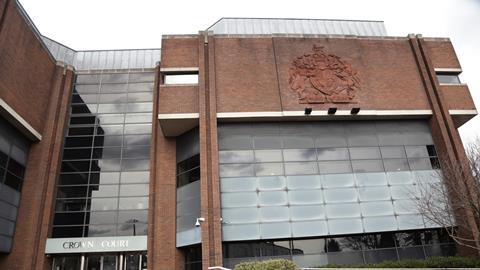A London Crown court has been closed after ‘life-expired’ concrete that is liable to collapse was spotted during preliminary work to improve the roof.
Harrow Crown Court (pictured) was closed for further investigations on Monday after reinforced autoclaved aerated concrete (RAAC) was found in the building.
According to a safety briefing notice from the Office of Government Property, RAAC is now ‘life-expired and liable to collapse’, which has already happened in two schools with little or no notice.
The notice says: ‘RAAC is a lightweight form of precast concrete, frequently used in public sector buildings in the UK from the mid-1960s to at least the mid-1980s. It is mainly found in roofs, although occasionally in floors and walls. It is less durable than traditional concrete and there have been problems as a result, which could have significant safety consequences.
‘It is important that those responsible for the management, maintenance or alteration of central and local government buildings know whether their building contain RAAC and, where they do, they act appropriately to ensure that such buildings are deemed safe.’
In a letter to criminal justice bodies this week, HMCTS officials said: ‘As part of preliminary works for a capital project to improve the roof at Harrow, we have had surveyors on site who have identified a potential building safety issue. While there is no indication of imminent risk, we have taken the decision to immediately close the entire site as a precautionary measure until a professional survey and, if required, remediation can take place.’
Cases will be relocated to other courts for the next month, the letter said.
In a statement, a spokesperson for HMCTS said: ‘Harrow Crown Court has been temporarily closed after reinforced autoclaved aerated concrete was found as part of improvement works. Cases will be heard at alternative sites to minimise disruption while we address the issue as quickly as possible.'
On whether other courts are being checked for RAAC, the spokesperson said: 'We have carried out extensive surveys and tests into our sites built in the 1960s to 1980s when RAAC was used and all those courts were deemed safe. As a result of this latest finding, we have broadened the scope of these tests to include all buildings of a similar age to Harrow Crown Court.'
HMCTS said it was already reviewing previous extensive surveys and tests completed on RAAC exposure as part of a cross-government inquiry. The material was found in just under 2% of its buildings.
This article is now closed for comment.




























16 Readers' comments